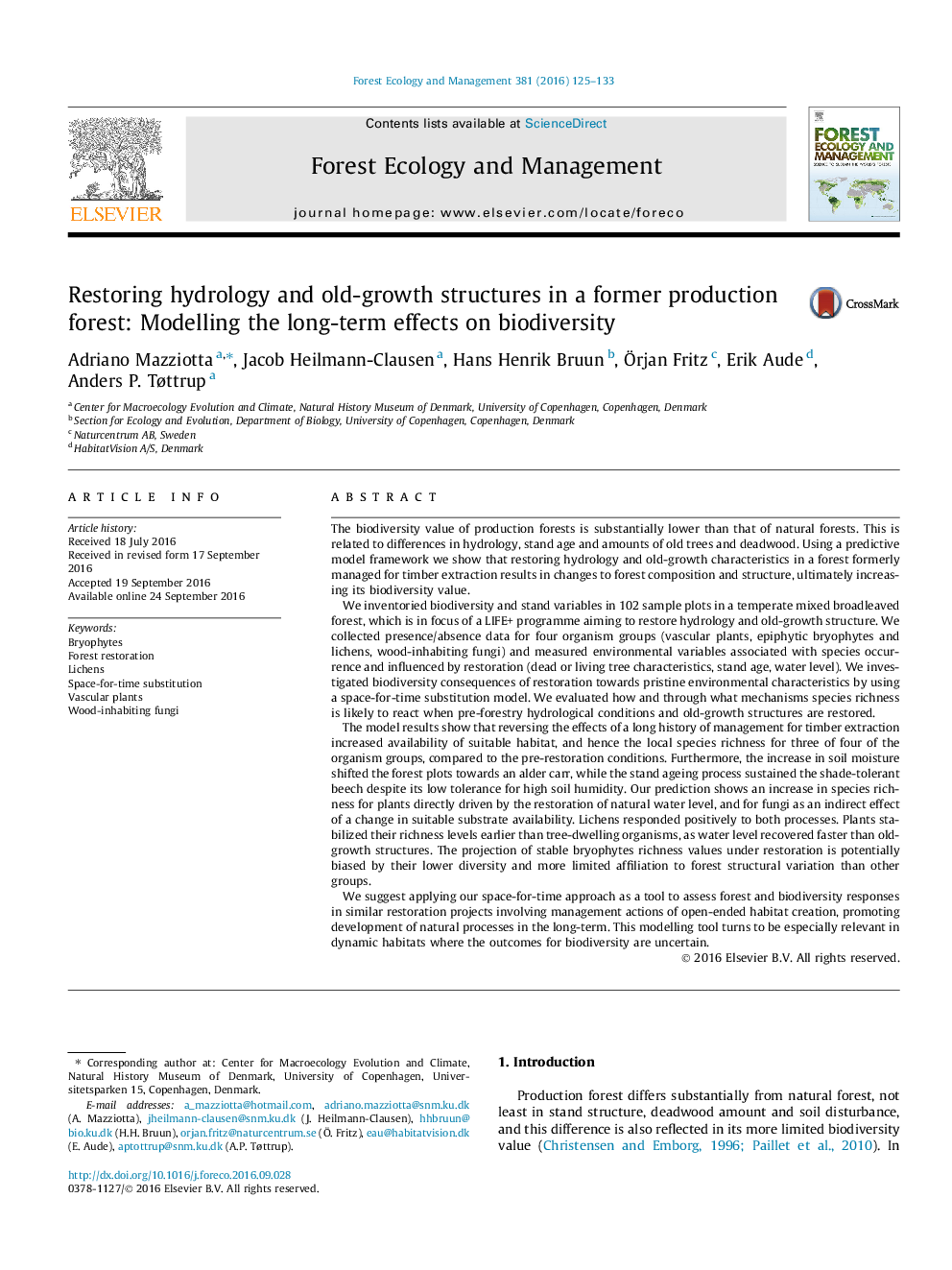| کد مقاله | کد نشریه | سال انتشار | مقاله انگلیسی | نسخه تمام متن |
|---|---|---|---|---|
| 6459551 | 1421377 | 2016 | 9 صفحه PDF | دانلود رایگان |
- The biodiversity value of production forests is lower than that of natural forests.
- This difference is due to altered forest hydrology and old-growth characteristics.
- We predicted that reversing management effects increased local species richness.
- Faster hydrology recovery stabilized plant richness earlier than tree dwellers.
- Our model predicts forest-biodiversity response in cases of open-ended restoration.
The biodiversity value of production forests is substantially lower than that of natural forests. This is related to differences in hydrology, stand age and amounts of old trees and deadwood. Using a predictive model framework we show that restoring hydrology and old-growth characteristics in a forest formerly managed for timber extraction results in changes to forest composition and structure, ultimately increasing its biodiversity value.We inventoried biodiversity and stand variables in 102 sample plots in a temperate mixed broadleaved forest, which is in focus of a LIFE+ programme aiming to restore hydrology and old-growth structure. We collected presence/absence data for four organism groups (vascular plants, epiphytic bryophytes and lichens, wood-inhabiting fungi) and measured environmental variables associated with species occurrence and influenced by restoration (dead or living tree characteristics, stand age, water level). We investigated biodiversity consequences of restoration towards pristine environmental characteristics by using a space-for-time substitution model. We evaluated how and through what mechanisms species richness is likely to react when pre-forestry hydrological conditions and old-growth structures are restored.The model results show that reversing the effects of a long history of management for timber extraction increased availability of suitable habitat, and hence the local species richness for three of four of the organism groups, compared to the pre-restoration conditions. Furthermore, the increase in soil moisture shifted the forest plots towards an alder carr, while the stand ageing process sustained the shade-tolerant beech despite its low tolerance for high soil humidity. Our prediction shows an increase in species richness for plants directly driven by the restoration of natural water level, and for fungi as an indirect effect of a change in suitable substrate availability. Lichens responded positively to both processes. Plants stabilized their richness levels earlier than tree-dwelling organisms, as water level recovered faster than old-growth structures. The projection of stable bryophytes richness values under restoration is potentially biased by their lower diversity and more limited affiliation to forest structural variation than other groups.We suggest applying our space-for-time approach as a tool to assess forest and biodiversity responses in similar restoration projects involving management actions of open-ended habitat creation, promoting development of natural processes in the long-term. This modelling tool turns to be especially relevant in dynamic habitats where the outcomes for biodiversity are uncertain.
Journal: Forest Ecology and Management - Volume 381, 1 December 2016, Pages 125-133
